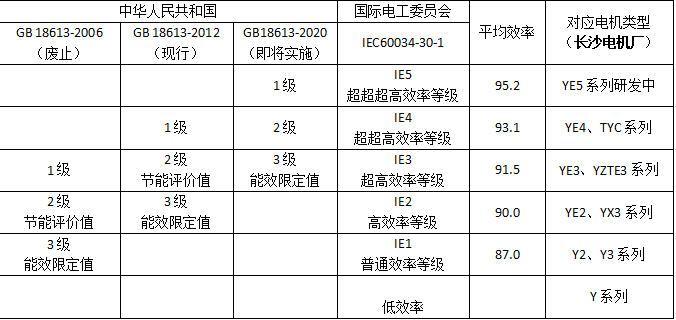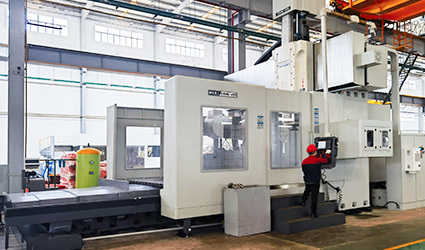Energy saving "long power scheme": frequency conversion speed regulation system and high efficiency motor
Time:
06 Aug,2020
Two important ways of motor energy efficiency:Variable frequency speed control system with high efficiency motor.
This paper expounds the energy-saving principle and characteristics of the variable frequency speed control system in the fan and pump load, the measures to improve the efficiency and reduce the loss of the high-efficiency motor, and the characteristics of the difference between the high-efficiency motor and the ordinary motor.

1. Introduction
With the deterioration of the environment and the lack of resources, the concept of energy conservation and environmental protection has become more and more deeply into the economic and social development, and all countries have increased investment in energy conservation and environmental protection technology and promotion. With the introduction of China's "Twelfth Five-Year Plan for Energy Conservation and Environmental Protection Industry", energy conservation and environmental protection have been pushed to a new height.
At present, the total installed capacity of electric motors in China has reached more than 0.4 billion KW, with annual power consumption reaching 1.2 trillion KWh, accounting for 60% of the country's total power consumption and 80% of industrial power consumption. Among them, the total installed capacity of fans, pumps and compressors has exceeded 0.2 billion KW, with annual power consumption reaching 800 billion KWh, accounting for about 40% of the country's total power consumption. Most of these motors operate at lower power utilization rates. As long as the power utilization rate of these motors is increased by 10 to 15%, the annual power saving can be at least 10 billion KW. Enough to see the motor energy saving market huge potential and importance.
The phenomenon of motor energy consumption is serious, which not only increases the production cost of enterprises, but also causes a great waste of electric energy, which is not consistent with the strategy of energy conservation and emission reduction implemented in China. At present, improving the operating efficiency of the motor can effectively change the phenomenon of high energy consumption of the motor, and the energy saving effect is very obvious, and the energy consumption can be reduced by 20% to 30% compared with the ordinary motor.
The main way of motor energy saving is to improve the operation efficiency of variable frequency motor through variable frequency speed regulation system, and the second is to use high efficiency motor.
2. Frequency conversion speed regulation energy saving
Variable frequency speed control technology is used for energy saving. At present, the most used is the speed control and energy saving of fan and pump load equipment, because the torque of fan and pump load is proportional to the square of speed. With the method of speed control to change its load flow, the power saving rate can reach 20% ~ 60%.
Most of the fans and pumps in China's power plants are driven at a constant speed. The air volume of the fan is adjusted by adjusting the opening of the air door, air duct baffle or valve. The water pump flow meets the requirements of the production process for air volume and water pump flow, resulting in serious waste of electric energy. Only a few fans and pumps have added hydraulic couplings and other devices for speed regulation. Although the load speed is changed, the motor speed remains unchanged, and part of the energy loss is in the hydraulic coupling. Its operating efficiency is low and the energy-saving effect is not obvious. If the use of high-voltage inverter to transform the fan pump, by changing the fan pump speed, thereby changing the fan air volume, pump flow to meet the needs of the production process, the operation of the most economical energy consumption, energy saving effect is very obvious. Now variable frequency speed control technology has become the most ideal way of a speed energy saving.
Principle of 2.1.
(1) Variable frequency speed regulation is to adjust the speed of the variable frequency motor by changing the input power frequency.
2.2 characteristics.
(1) Variable frequency speed regulation can realize variable frequency starting, short starting time, small starting current, dragging a larger load moment of inertia, and starting smoothly, stepless smooth speed regulation, no damage to the power grid and motors, and prolonging the service life of electromechanical equipment.
(2) The operation is convenient and the maintenance is simple, and there is no need to set the adjustment baffle, which avoids the energy loss caused by throttling. Need to adjust the flow, pressure, according to the previous formula, as long as the frequency to change the motor speed can be changed.
(3) The use of variable frequency speed regulation not only reduces the failure rate of the fan pump, reduces the investment of maintenance costs and management costs, but also improves the quality of the system's automatic adjustment, and the energy-saving effect is obvious.
(4) The use of frequency conversion and constant pressure water supply can eliminate the water hammer effect and realize closed-loop water supply. Users can directly take water from the pipe network, avoiding the secondary pollution of high-water tank and water tower storage. Not only the system has a protection function, self-diagnosis and self-processing capabilities, to achieve intelligent building.
In short, frequency control as a new means of energy-saving speed, is conducive to the safe and economic operation of fans and pumps. The shortcomings are the quality of the power supply, the working environment of the inverter and the motor requirements are relatively high, and the maintenance cost is high.
3. High efficiency motor
A high-efficiency motor is a motor with high efficiency, and its efficiency should meet the relevant energy efficiency level requirements. The high-efficiency motor perfectly applies the new manufacturing process and new materials to the core components. Through the optimized design of the motor coil, the loss of electromagnetic energy, thermal energy and mechanical energy is effectively reduced, and the operating efficiency is improved. The motor generates less heat and has a long operating life.
3.1 Loss Reduction Optimization Measures
As we all know, the loss of the motor is mainly composed of stator copper loss, rotor copper loss, iron loss, mechanical loss and stray loss. The development of high-efficiency and ultra-high-efficiency motors must start from reducing these five losses and take various measures to tap the potential. Reduce losses and improve the efficiency of the motor.
3.1.1 Increase effective materials to reduce copper loss and iron loss.
For high-efficiency motors, due to the large increase in efficiency indicators, in order to reduce winding losses and core losses, it is necessary to appropriately reduce the current density and magnetic induction intensity, so the corresponding amplification of the wire cross-section and increase the length of the core, part of the base to enlarge the outer diameter of the punch, thus increasing the amount of effective material.
3.1.2 Use relatively high grade magnetic materials to reduce iron loss.
Due to the limitation of axial size and center height, the simple increase of effective materials can not achieve the purpose of greatly reducing the iron loss, so it is necessary to choose a lower loss of cold-rolled silicon steel sheet, which is particularly important for medium and high-power motors.
3.1.3 Reasonably control the temperature rise of the motor.
Because the temperature rise is affected by the amount of materials used and the mechanical loss, under the condition of the same material, the temperature rise is reduced by increasing the cooling air volume. With the decrease of temperature rise, the copper consumption of the stator and rotor decreases and the mechanical loss increases. If the copper consumption of the stator and rotor decreases more than the mechanical loss increases, the efficiency will increase, otherwise, the efficiency will decrease. Therefore, reasonable control of temperature rise plays a key role in improving the efficiency of high-efficiency motors.
3.1.4 Measures to reduce stray losses.
(1) Change the slot fit When the harmonic magnetic field moves relative to the surface of the iron core, eddy current loss and hysteresis loss are generated near the surface layer of the iron core steel sheet, so it is called surface loss, mainly eddy current loss. This part of the loss is related to the amplitude and frequency of the harmonic magnetic field, and the amplitude and frequency are affected by the number of slots, so this part of the loss is related to the number of slots in the stator and rotor.
(2) Increasing the air gap of the motor, and then reducing the amplitude of the stator and rotor harmonic flux, can effectively reduce the stray loss.
3.2 efficient motor features:
(1) High efficiency, IE2 is 3% higher than IE1 on average, and IE3 is about 5% higher than IE1.
(2) Need to use more high-quality materials. IE2 is 25% ~ 30% higher than IE1 motor cost, IE3 is about 40% ~ 60% higher than IE1.
(3) Due to the lower operating temperature and longer motor life, maintenance costs can be reduced.
(4) The starting current is larger under typical design conditions.
(5) the rotor inertia is large.
(6) The speed is higher and the slip is smaller under rated load.
Starting from energy conservation and environmental protection, high-efficiency motors are the current international development trend. In 2013, the Ministry of Industry and Information Technology will start with the promotion of high-efficiency motors, the elimination of low-efficiency motors, and the energy-saving technological transformation of existing motor systems to promote, eliminate and energy-saving transformation of motors and motor systems to 0.1 billion kilowatts, expand the market share of high-efficiency motors, and promote motor products Upgrade and industrial upgrading.
4. Concluding remarks
In this paper, a detailed analysis of the variable frequency speed control system in the fan and pump load by changing the frequency of speed control, to achieve the purpose of energy saving, high efficiency motor to reduce losses and other measures to effectively improve the efficiency of the motor. This is undoubtedly of great significance for China to implement the national policy of energy conservation and emission reduction, save energy and improve the economic efficiency of enterprises.
Schedule: Correspondence between domestic and foreign motor energy efficiency standards

 Sales@csdj.com.cn
Sales@csdj.com.cn
 +86-0731-89758601
+86-0731-89758601











